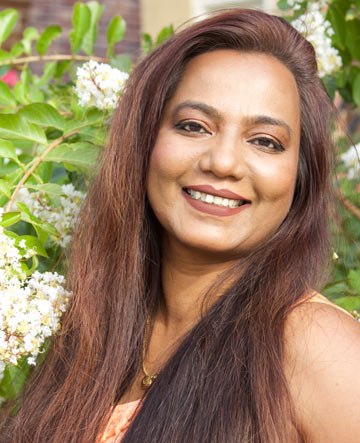Vijaylakshmi Nadar’s most vivid childhood memories involve waking up in mornings to see a horde of men and women outside their small home in Sion, Mumbai, waiting to see her father as he addressed their problems. Be it the hapless Tamils from the slums of Dharavi or the high and mighty, “I have seen some of them literally fall at his feet,” she tells THE WEEK on phone from the US. Daughter of Dharavi’s ‘godfather’ Thiraviam Nadar, known as Gudwala Seth and Kaala Seth during his hey days, Vijaylakshmi says her father is the inspiration behind Tamil director Pa Ranjith’s Kaala starring Rajinikanth.
"I watched the movie and I confirm it is based on my father's life, with a sub-plot of present day Dharavi which adds no value to the film whatsoever," she says.
Ranjith and his team, however, on multiple occasions have denied her claims, and called it a fictional story. Moreover, Ranjith said in an interview last week that the titular character was inspired from his grandfather.
After a year-long struggle to get the filmmakers credit the story to her father saw no results, her brother Jawahar Nadar filed a Rs 101 crore defamation suit against Rajinikanth for "portraying their father and the Nadar community in a negative light". Though the Madras High Court refused to stall the release of Kaala, hearing on the defamation case will continue on Thursday as the film hits the screens globally.
“Nothing much has been documented about my father and Pa Ranjith is taking advantage of it,” Vijaylakshmi says. Right from last year after Pa Ranjith, in an interview, spoke about his new project that revolves around an aged Tamil don in Mumbai, who was from Tirunelveli district of Tamil Nadu, Vijaylakshmi knew this was her father’s story. “That was the first cue,” she says. “Rumours flew that it could be the story of Varadaraja Mudaliar or Haji Mastan, but neither of them is from Tirunelveli. But my father is.”
She pieces together her father’s story which has all the elements of a perfect pot-boiler: An impoverished boy of 16, Thiraviam Nadar fled to Mumbai in the 1950s after his village in Tirunelveli was hit by drought. With a group of other Tamilians, who brew illicit liquor around the region, he went on to grab land and set up makeshift structures which became shops and homes in the desolate no-man’s land of Dharavi.
“Those days Dharavi was a stinky, mosquito-ridden swamp where no one wanted to go to,” she adds. “Another major contribution by my father was the Kamarajar memorial high school which started off with just one room. It was a necessity at that time because the nearby schools were Tamil Brahmin-dominated and they refused to admit students from Dharavi.”
The second cue came from the first look of Kaala which featured the family of Rajinikanth’s character—a photo of the husband, wife, one daughter, three sons and five grandchildren. “This is the exact composition of my family, it could be no coincidence,” she says. Rajinikanth was also shown as sitting on a jeep with registration plate that read ‘1956’, the exact year her father reached Mumbai. The protagonist's fully black attire, though a contrast, is also a stark reminder of her father who always dressed in a white mundu and white shirt.
The teaser dropped another interesting cue, she says. "While many may not have realised that the antagonist Nana Patekar is modelled around Shiv Sena supremo Bal Thackeray, that has a clear significance in our lives.” Those were the days when Thackeray had sent out a clarion call for all Madrasis (a colloquial term for South Indians) to leave Mumbai. The Tamils of Dharavi grouped under her father and Varadabhai to rubbish Thackeray’s threats to vacate. The popular dialogue from the teaser—kya re, setting ah?—is a slice from the real life, she adds.
Vijaylakshmi and her brothers got a taste of their father’s enduring appeal when he died in 2003. Though they had planned of a simple cremation at the nearby crematorium a few minutes away from home, things didn’t work out that way. Nadar’s body was taken out in a flower-bedecked truck, in a procession through all the areas her father used to frequent. As thousands, including general public and elected representatives thronged the procession, it took them nine hours to reach the crematorium, she recalls. “For months after his death, people paid their respects in local Tamil newspapers about how my father had changed their lives.”
“We never wanted to bring it to this level, but now with the defamation suit, we are getting people to listen to us,” says Vijaylakshmi. "Watching the film will give us more points to fight for; the battle has just begun."
Speaking about caste equations in the films, she says the Nadar community is concerned if the director will bring in an unwarranted dalit angle, like in some of his previous works.
"If Pa Ranjith has a spine, he should admit it is my father’s story. It is also disrespectful to dismiss my father’s work as a piece of fiction," she says.
For the Nadar family, this defamation suit is not about the money. The money will be given to the people of Dharavi—her father’s people, she says.



